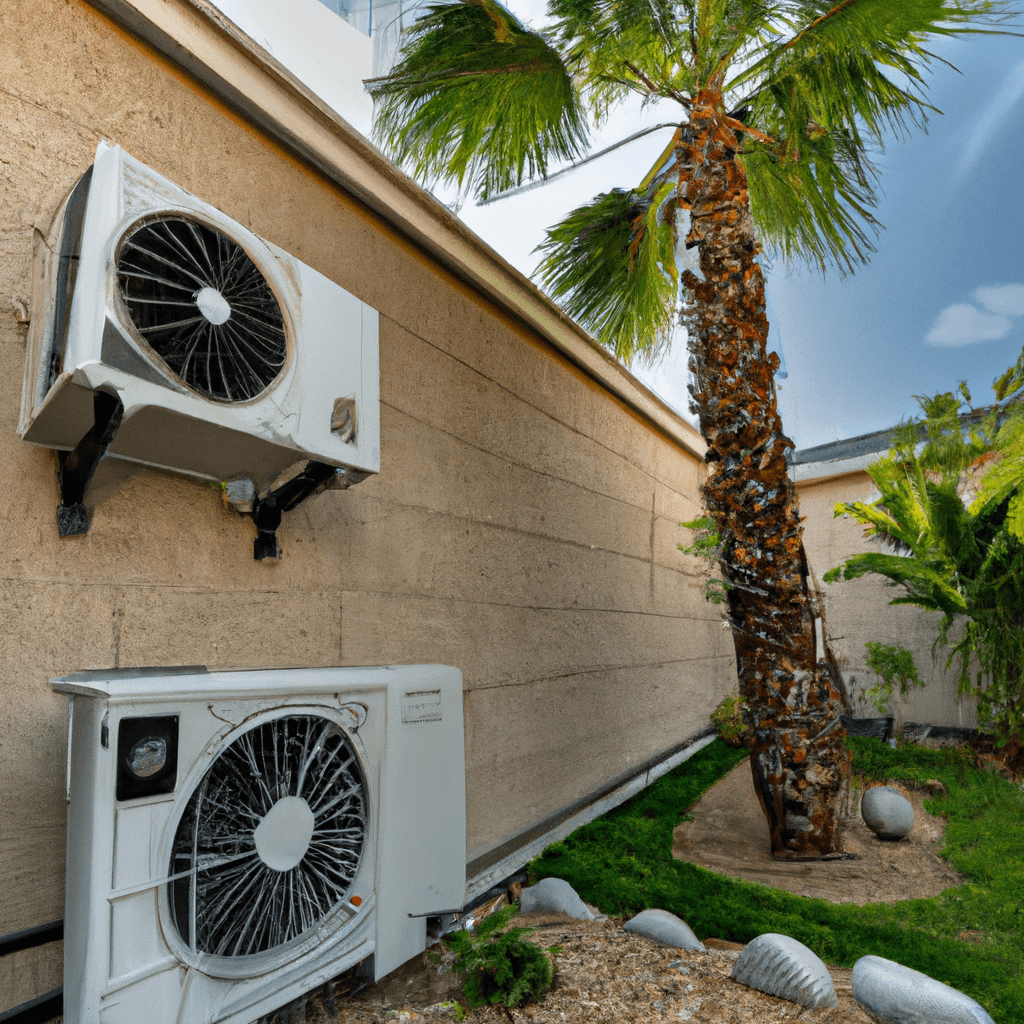A Step-by-Step Guide to DIY AC Installation
Installing your own air conditioning unit may seem daunting, but with the right tools, a few helpful tips, and a bit of patience, you can have a new AC unit fitted in no time. This guide will show you how to install a window-mounted air conditioner in a standard AC frame.
Identifying Your A/C Size and Location
The first step in the AC installation process is determining the size of the air conditioner and where it should be installed. The size of your unit should be based on the size of your bedroom or living room as an air conditioner must be able to properly cool the room. Generally, you should aim for a room to have 20 BTU of cool air per square foot. So, for example, if you have a 200-square-foot room, you should aim for an air conditioner unit with a rating of 4,000 BTUs.
When it comes to installation location, you need to find a place near the center of the room or where airflow is balanced from all sides. Installing an air conditioner near a window will provide an ideal setup because the unit can be vented to the outside. Additionally, window-mounted ACs must be installed into a frame to be properly secured, thus preventing moisture and air leaks.
Prepping the Window Frame and Unit
Once you’ve identified the right size and location for installing the air conditioner, you need to prep the window frame. This includes weatherstripping the frame surrounding the window and keeping the gap between the frame and window to a minimum in order to reduce any drafts. Additionally, you’ll need to install the mounting frame provided with the unit.
Mounting frames are usually easily-assembled and usually include screws and adjustable brackets to ensure a secure and efficient fit. Once the mounting frame has been assembled, you need to make sure that the opening between the installed frame and the window is as small as possible to ensure airtightness.
Installing the AC Unit
Once you’ve ensured the window frame and the mounting frame are adequately secured, the next step is to install the unit. The installation process for air conditioners is usually straightforward, with most units coming with explicit instructions.
Before you start, you should unpack the AC unit and make sure all the required parts, wires, and connections are present. Additionally, you may want to select the right power cord for the outlet you’ll be using. After unpacking the unit, you should install the accordion-style side panels onto the mounting frame. These panels will help create a tighter seal between the mounting frame and the unit.
Now that the panels are secured, the AC unit should fit into the frame. Depending on the model, the sides may contain hinges or levers that allow the AC unit to fit into the frame. Once everything has been secured, you should insert the power supply line into the unit, plug it into the outlet, and wait for the unit to power up.
Final Checks before Use
The AC unit should now be installed in the window frame. Before testing the unit, ensure that the panels are secured and the gap between the unit and the window frame is as small as possible to maximize efficiency. After testing the unit, you should run it for at least 20 minutes to ensure everything is working properly.
If the unit occurs any issue or fails the test, you should reach out to a reliable appliance repair service, who will be able to diagnose the issue and make any necessary repairs. With the right tools and a bit of patience, you should be able to install a new window-mounted AC without having to break the bank.
Installing your own air conditioning unit can be a great way to improve your home’s air quality, but it’s important to remember that it’s a complex process that requires the right tools, materials, and expertise. If you’re at all unsure about the installation process, it’s best to call a local, reliable appliance repair service to make sure the job is done correctly.



DIY AC Installation: Best Practices to Avoid Issues
The proper installation of an air conditioning unit is vital to its performance and energy efficiency. DIY AC installation might seem like a cost-effective solution, but it often results in costly repairs. To avoid issues, homeowners should take preventive action and consider the best practices specified by manufacturers, local appliance companies and HVAC technicians.
Manufacturer Recommendations
When installing an air conditioning unit, manufacturers offer detailed instructions that should be closely followed. This includes carefully evaluating the site, correctly installing the condenser unit, securing all electrical connections, and checking for any leakage. Moreover, manufacturers recommend that filters should be changed regularly and fuses should be checked.
Local Appliance Companies’ Recommendations
Local appliance companies typically recommend that all installations should be carried out by professionals. This ensures that the system is calibrated correctly to meet the specific requirements of the property. Local appliance companies also recommend that homeowners should check the condenser unit regularly to ensure that it is free from dirt and debris.
HVAC Technician Recommendations
HVAC technicians usually recommend following all of the manufacturer’s instructions when installing an air conditioning unit. Additionally, they suggest researching energy-saving tips to make the most of the unit and save money on energy costs. Furthermore, they recommend that homeowners should check the refrigerant levels and make sure the unit is properly levelled to guarantee optimal performance.
Itemized List
- Carefully evaluate the site according to manufacturer’s instructions
- Securely install the condenser unit
- Make sure all electrical connections are secure
- Check for any leakage
- Change filter regularly
- Check fuses to make sure they are properly connected
- Have the system installed by professionals
- Check condenser unit regularly for dirt and debris
- Follow all manufacturer’s instructions
- Research energy-saving tips
- Check refrigerant levels
- Make sure the unit is properly levelled
Ultimately, homeowners should factor in the cost of having a unit professionally installed to guarantee optimal performance and energy efficiency. Doing so will help avoid any potentially costly problems that may arise from DIY AC installation.
Average Repair Cost for DIY AC Installation
Do-it-yourself (DIY) air conditioning installations can be daunting and, in some cases, costly. If done incorrectly, more damage can result, driving up the cost of repair. To avoid this, reliable experts should be consulted for technical help.
Some of the essential parts needed for the installation include an AC unit, an indoor coil, a filter and a condenser. If it’s a challenging installation, then more tools, materials and expertise will be required. All of this will add to the cost.
The minimum repair or installation cost for DIY AC installation in California is around $1,700, 20% higher than the pre-COVID rate. However, the costs can reach as high as $4,000 if additional parts, labor or complex repairs are needed.
If you encounter any difficulty while crafting your DIY AC installation, then it’s best to call a reliable air conditioning and heating specialist. For example Local Reliable Air Conditioning & Heating at (866) 311-8590.
Remember: air conditioning is a delicate affair and requires a certain level of expertise to ensure optimal functioning. Taking the DIY route may potentially cost more in the long run.
DIY AC Installation
Are you considering doing a DIY air conditioning installation? If so, you need to know that it’s important to have an experienced professional handle your installation. California’s Reliable Air Conditioning & Heating is a family-owned company that delivers same-day service for appliance and HVAC repair and installations.
Our highly-trained technicians have a minimum of 5 years experience and are trained to handle a variety of challenging DIY AC installation projects with ease. Our team is licensed and insured, and our competitive rates make it easy for you to get the service you need. We also provide a 90-day warranty on all of our AC repair and installation services.
Whether you’re looking to install a window air conditioning unit, or a complete HVAC system, we have the knowledge and experience to handle the job. Our team is highly trained in all the latest procedures, meaning you get the job done right the first time. We always work hard to deliver the highest quality service and results possible.
At Reliable Air Conditioning & Heating, we strive to meet your needs with quick and reliable service. We’ll arrive on time, explain all of your options, and will always provide you with honest and affordable prices. Our team’s commitment to quality is second to none and we always aim to exceed your expectations.
If you’re looking for experienced technicians to handle your DIY air conditioning installation needs, look no further than the professionals at Reliable Air Conditioning & Heating. We’re here to deliver the highest quality experience for our customers and will go above and beyond to make sure your needs are met. Contact us today to find out more about our AC repair and installation services and let us show you why we’re the best choice for your DIY AC installation.
FAQ About A Step-by-Step Guide to DIY AC Installation
What is a DIY AC installation?
DIY AC installation is the process of installing a new air conditioning system without the help of a professional. It involves selecting a compatible AC unit, reinforcing the area, connecting the unit and the wiring, and checking for proper ventilation.
Should I attempt a DIY AC installation?
Rather than attempting a DIY AC installation, we recommend contacting an experienced and reliable professional. Air conditioners involve complex wiring and other electrical components, and they must be connected correctly to work properly and safely.
What should I consider before attempting a DIY AC installation?
Before attempting a DIY AC installation, you should ask yourself if you have the relevant experience and materials necessary. The process of AC installation involves both indoor and outdoor components, and it may require additional reinforcements such as a crane rental. It is important that you research thoroughly and understand the necessary steps of AC installation.
What should I do if I need help with a DIY AC installation?
If you find that you need assistance with a DIY AC installation, we recommend you contact a local, reliable appliance repair service to guide you. Local Reliable Appliance Repair can provide you with expert assistance and advice on AC installation. They can be reached at (866) 311-8590.

